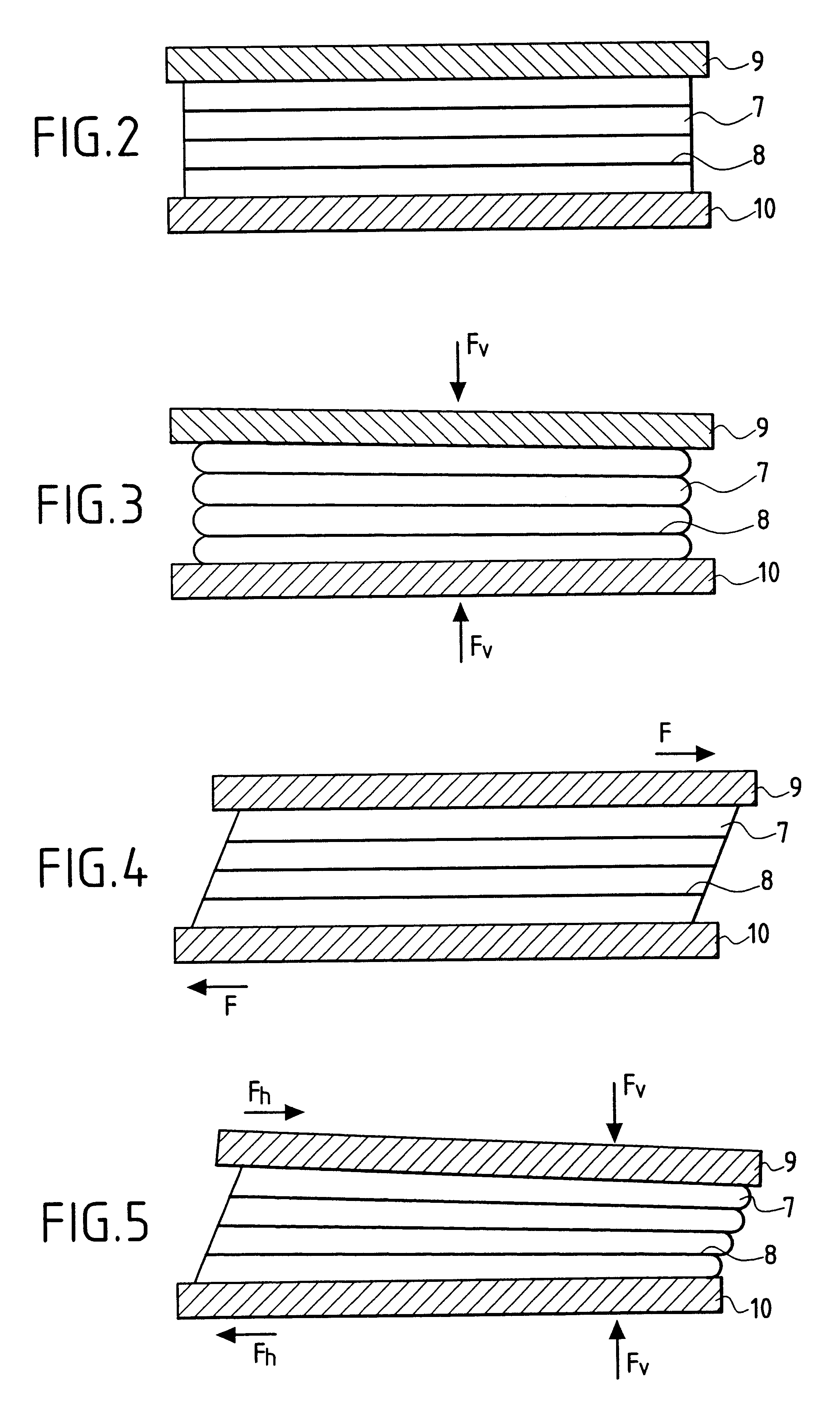Bottom to surface link system comprising a submarine pipe assembled to at least one float
- Summary
- Abstract
- Description
- Claims
- Application Information
AI Technical Summary
Benefits of technology
Problems solved by technology
Method used
Image
Examples
Embodiment Construction
In the embodiments of FIGS. 1 to 10, the laminated abutments comprise layers of elastomer and of metal reinforcement between plates having circularly symmetrical surfaces about an axis constituted by the axis ZZ' of said pipe and of said can when at rest.
To clarify the description of the invention, the pipe-and-can assembly is described relative to an orthogonal frame of reference XYZ whose axis ZZ' coincides with the axis of the pipe and the can at rest, whose axis XX' lies in the plane of the figure, and whose axis YY' lies in the plane perpendicular to the Figure.
In FIGS. 1, 6, 7, and 8, the plane laminated abutment is a frustoconical plane laminated abutment comprising a rigid bearing part 9 of frustoconical shape secured via its base to a layer of elastomer 7 in the form of a washer, said frustoconical part having a central cylindrical cavity secured to said pipe, and said elastomer layers 7 and said rigid pieces of reinforcement 8 in the form of superposed washers are inscribe...
PUM
 Login to View More
Login to View More Abstract
Description
Claims
Application Information
 Login to View More
Login to View More - R&D
- Intellectual Property
- Life Sciences
- Materials
- Tech Scout
- Unparalleled Data Quality
- Higher Quality Content
- 60% Fewer Hallucinations
Browse by: Latest US Patents, China's latest patents, Technical Efficacy Thesaurus, Application Domain, Technology Topic, Popular Technical Reports.
© 2025 PatSnap. All rights reserved.Legal|Privacy policy|Modern Slavery Act Transparency Statement|Sitemap|About US| Contact US: help@patsnap.com



